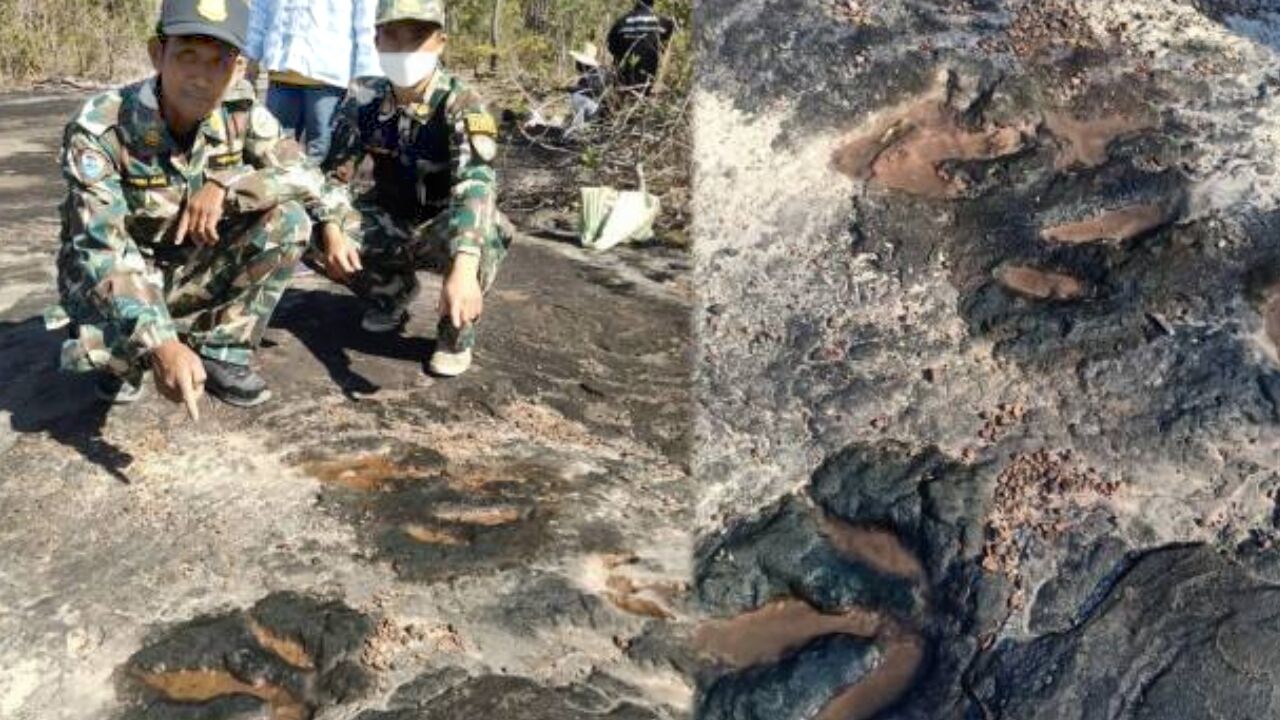Dinosaur footprints found in Kalasin park

Phu Faek forest park, located in the northeastern province of Kalasin, is known for its rich history and geological significance. Recently, the park has made an exciting discovery of fossilized dinosaur footprints. The Department of Mineral Resources, along with park officials, were notified of the finding by a local villager from Ban Nam Kham, in Phu Laen Chang sub-district.
Upon investigation, they discovered over 10 footprints that are believed to have belonged to a species of carnivorous dinosaur. The prints were left embedded for millions of years in a large bed of sandstone.
The footprints, which range from 21 centimetres to 30 centimetres long and are between 17 and 31 centimetres wide, are believed to be left behind by a small meat-eating dinosaur. The officials estimate that this dinosaur likely stood about 2 metres tall and was about 5 metres long. It called home the land of what would become Thailand approximately 140 million years ago.
This is the first discovery of footprints or any evidence of this specific species of dinosaur in Thailand, making it a significant discovery for the scientific community.
Phu Faek forest park has long been recognized for its geological significance and has been a popular destination for those interested in palaeontology and earth science. The discovery of these fossilized footprints adds to the park’s already rich history and has made it an even more popular attraction for tourists.
The park has long been appreciated for its beautiful forest scenery, with tourists coming to enjoy the flora and small animals living there. Then, in 1996, a group of tourists were having lunch in the foothills of the park and noticed a strange imprint on a rock terrace.
They looked closer and discovered what seemed to be a giant footprint. They reported their findings to local geologists who inspected the print and confirmed its origin.
Since then, park officials have worked to preserve and showcase what were originally just four dinosaur footprints uncovered. This recent discovery adds 10 more prints to the area, believed to be from a different species of dinosaur.
Latest Thailand News
Follow The Thaiger on Google News:


























